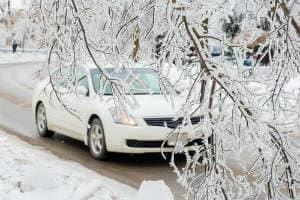The holiday season is a time for family and friends in Kentucky to gather and to enjoy one another’s company. Yet many activities that occur throughout the holiday season can pose risks of personal injury to you, your children, and to other loved ones.
How often do holiday activities within your house cause personal injuries? The Kentucky Cabinet for Health and Family Services notes that nearly 13,000 people require medical care in emergency departments each year for holiday injuries such as falls from ladders, while about 13,000 candle-related fires cause millions of dollars in property damage and hundreds of fatalities.
Each holiday season, many Kentucky residents travel by automobile to visit relatives and friends, as a recent report from KFVS CBS News 12 reminded us. It is important to take steps to avoid a dangerous car accident when travelling during the holidays.
Underscoring the need for auto accident prevention during the holidays, the Kentucky Office of Highway Safety has joined with national agencies to ensure that safe driving remains a priority during the holiday season. The simplest way to protect yourself and your loved ones is to be sure that everyone wears a seat belt.
Here’s a special reminder to pickup truck drivers of the importance of wearing seat belts. Many Kentuckians love their pickup trucks. We understand! A seat belt survey conducted by the Kentucky Transportation Center in 2014, however, found that seat belt usage was lower among pickup truck drivers than occupants of passenger cars and sport utility vehicles. About 8 of every 10 pickup truck drivers in Kentucky wore a seat belt compared to 9 out of 10 drivers of other passenger vehicles, according to the survey. The best way to survive a crash is to buckle up.
Cooking, Christmas trees, holiday lights, and children’s toys also can pose serious risks of injury during the holidays.
 Practicing holiday safety at home is extremely important, whether you are in the kitchen cooking a Thanksgiving dinner or placing new toys under the Christmas tree. A fact sheet from the Kentucky Cabinet for Health and Family Services recommends paying attention to the following Christmas holiday safety tips to ensure that your house remains a safe place:
Practicing holiday safety at home is extremely important, whether you are in the kitchen cooking a Thanksgiving dinner or placing new toys under the Christmas tree. A fact sheet from the Kentucky Cabinet for Health and Family Services recommends paying attention to the following Christmas holiday safety tips to ensure that your house remains a safe place:
 In addition to the safety tips we mentioned above, it is important to consider holiday safety practices when you are outside your home. One of the most dangerous holiday activities is driving in inclement weather. A safety tip sheet from the AAA Foundation for Traffic Safety provides significant advice for avoiding highway accidents if you are traveling over Christmas, or the New Year.
In addition to the safety tips we mentioned above, it is important to consider holiday safety practices when you are outside your home. One of the most dangerous holiday activities is driving in inclement weather. A safety tip sheet from the AAA Foundation for Traffic Safety provides significant advice for avoiding highway accidents if you are traveling over Christmas, or the New Year.
As an article in Health Magazine emphasizes, it is also important to avoid germs and to stay in good physical health over the holidays. Ensure that your children are up-to-date on vaccinations, and encourage family members to wash their hands frequently with soap and warm water.
If you or someone you love has sustained a serious injury during the holiday season, an experienced Kentucky personal injury attorney can assist with your case. Contact Becker Law Office today to speak with a dedicated advocate and to learn more about filing a claim for compensation.